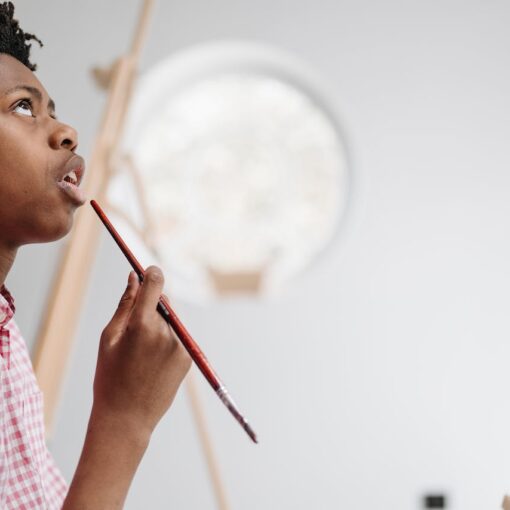In the realm of problem-solving and creative thinking, lateral thinking and parallel thinking stand out as two distinct methodologies aimed at fostering innovation and effective solutions. Lateral thinking, a concept introduced by Dr. Edward de Bono in 1967, is characterized by an indirect approach to problem-solving that often involves looking at things from multiple perspectives and generating alternative solutions that would not be immediately apparent through traditional step-by-step logic. It emphasizes the disruption of standard thinking patterns to arrive at novel solutions to problems.
Parallel thinking, which is also attributed to de Bono, is a technique designed as a constructive alternative to adversarial debate. Rather than conflicting points of view clashing in an argument, parallel thinking encourages participants to “think alongside” each other in the same direction. Each participant adopts a specific perspective at a time, which collectively leads to an expansive exploration of the subject at hand. This method of thinking seeks to structure thinking processes in a way that all participants can contribute to the exploration of a problem or issue without confrontation.
Key Takeaways
- Lateral and parallel thinking are innovative approaches to problem-solving and creativity.
- Lateral thinking breaks conventional patterns to uncover new solutions.
- Parallel thinking structures collective thought to explore issues without confrontation.
Understanding Lateral Thinking
In today’s rapidly evolving world, lateral thinking stands as a pivotal approach to problem-solving and creativity. It shifts the conventional focus from traditional linear methods to more expansive and innovative strategies.
Origins of Lateral Thinking
Lateral thinking was conceptualized by Edward de Bono in the 1960s. Dr. de Bono introduced this method as a way to foster creative problem-solving and ideation that deviates from established patterns of thought. He posited that traditional logical approaches are not the only means to find solutions; sometimes, an unconventional idea can lead to a breakthrough.
Principles and Applications
The core principle of lateral thinking revolves around divergent thinking—a process of exploring multiple possible solutions rather than following a linear pathway. This approach values the generation of many creative solutions, understanding that not all will be viable, but among them could be innovative answers. In practice, lateral thinking encourages individuals and organizations to look beyond the obvious, embrace new perspectives, and apply a creative approach to problem-solving.
Lateral Thinking Techniques
Several techniques are synonymous with lateral thinking, aiding in its application across various scenarios:
- Random Entry: Using a random stimulus to generate new ideas.
- Provocation and Movement: Introducing an absurd or exaggerated statement and then building on it to find novel solutions.
- Challenge: Questioning the status quo to disrupt complacency and surface fresh ideas.
Each of these techniques aims to push beyond traditional boundaries, employing unconventional ideas to drive creativity and innovation. By using lateral thinking, one can transform the abstract or seemingly unconnected into practical and unprecedented opportunities.
Exploring Parallel Thinking

Parallel thinking is a constructive approach to problem-solving and group discussions designed to focus on divergent thinking in a cohesive direction. This method, developed by Edward de Bono, emphasizes collaboration over confrontation.
Basics of Parallel Thinking
Parallel thinking, a term coined by Edward de Bono, entails the simultaneous direction of thought by all members of a group. Unlike traditional argumentative discussion, this approach mitigates confrontation as participants consider issues from multiple perspectives together, each one adding to a composite understanding of the whole. In this framework, each member contributes to an aggregate map of insights, not in opposition, but in tandem.
Six Thinking Hats Model
Edward de Bono’s Six Thinking Hats model exemplifies parallel thinking in practice. This structured technique allows a group to look at decisions from a number of important perspectives, often represented by the metaphor of wearing colored hats:
- Blue Hat: This role manages the process and ensures each hat is utilized; it’s synonymous with control in the workflow of a session.
- White Hat: It focuses on information known or needed, making it a key player in objective analysis.
- Red Hat: Symbolizes emotions and intuitions, allowing feelings to be voiced without the need for justification.
- Black Hat: It’s critical, looking for potential problems and emphasizing cautious and careful planning.
- Yellow Hat: Represents optimism, exploring the positives and benefits regarding the situation.
- Green Hat: Stands for creativity, encouraging the free flow of novel ideas and fresh thinking.
This model promotes thorough exploration of a problem, as individuals contribute not only facts (White Hat) but also emotions (Red Hat), cautionary insights (Black Hat), optimism (Yellow Hat), creative ideas (Green Hat), and a meta-perspective on the thinking process itself (Blue Hat).
Group Synergy in Parallel Thinking
Parallel thinking leverages group synergy to make the problem-solving process more democratic and efficient. By capitalizing on the strengths of all members, the group can reach more creative solutions with the Six Thinking Hats model, as each perspective is shared and valued. Collaboration is at the heart of this approach, breaking down egos and barriers to clear-sighted group decisions.
Lateral vs Parallel Thinking
This section delineates the distinctive functions of lateral and parallel thinking in the realm of creative problem solving.
Comparing Thinking Processes
Lateral thinking, conceived by Dr. Edward de Bono, invites novel solutions to problems by moving away from traditional step-by-step logic to a more creative and indirect approach. It values the generation of new ideas and innovation without being constrained by existing patterns or assumptions. This mode of thinking encourages the seeking out of unconventional alternatives and welcomes multiple perspectives.
Parallel thinking, also developed by de Bono, is a cooperative approach where individuals address a challenge from varied viewpoints in a structured manner. Unlike adversarial thinking, it does not focus on argument or critique, but rather on applying reason from different angles without confrontation, thus respecting constraints while encouraging a comprehensive view.
Integration in Problem Solving
In problem solving, lateral thinking is particularly effective for breaking free from traditional ideas that might stifle innovation. It’s about changing concepts and perception. Parallel thinking, in contrast, is utilized in group discussions where everyone works towards exploring a problem from many sides, allowing for a more organized exploration of alternatives.
Benefits and Limitations
Lateral thinking takes advantage of unexpected approaches and can result in groundbreaking new ideas. However, its unstructured nature may lead to unclear paths or solutions that are difficult to implement within certain constraints. On the other hand, parallel thinking enables a thorough and collective approach to problem solving, but may lack the spontaneity for radical innovation that lateral thinking provides. Both methodologies, when applied aptly, enhance the ability to address complex issues from multiple perspectives.
Practical Applications
Lateral and parallel thinking strategies are indispensable for ushering in new levels of creativity and innovation across various fields. Practical applications of these thinking techniques effectively tackle challenges, encourage disruption in stagnant ideas, and stimulate the brain’s problem-solving capabilities.
Creative Problem-Solving in Business
In business contexts, lateral thinking fosters innovation by encouraging unusual or unorthodox ideas that may lead to groundbreaking products or services. For example, companies use brainstorming sessions as a tool for lateral thinking, where employees propose solutions without restricting their creativity, which could lead to novel products that shift market paradigms. The use of Six Thinking Hats, a well-known parallel thinking tool, allows teams to look in the same direction and minimize conflict while maximizing output during problem resolution discussions.
Educational Approaches to Thinking
In the education sector, these thinking strategies equip students with the capacity to think beyond conventional frameworks. They develop skills that prepare them for the complex problem-solving required in many modern careers. For instance, educators use Bloom’s Taxonomy in parallel with de Bono’s lateral and parallel thinking methods to enhance critical thinking among students, enabling them to analyze and synthesize information more effectively, and preparing them to face academic and real-world challenges.
Innovative Environmental Solutions
In the quest to address environmental challenges, lateral thinking techniques can uncover innovative environmental solutions often missed by traditional analytical approaches. Thinking techniques that reframe problems, like lateral thinking, can lead to disruptive environmental innovations such as alternative energy sources or waste reduction technologies. Parallel thinking, on the other hand, can unite stakeholders to collectively focus on a single environmental challenge at a time, thereby systematically addressing issues such as climate change or resource scarcity. These methods foster a synergy of ideas and action plans within environmental fields.
Fostering Creative and Effective Thinking
To cultivate an environment where creativity and effectiveness converge, it’s essential to foster a mindset enriched by diverse thought patterns and built upon critical skills. This approach not only enhances problem-solving capabilities but also ensures robust and innovative decision-making.
Encouraging Diverse Thought Patterns
They understand that a creative approach to problem-solving often involves stepping outside conventional frameworks to embrace diversity in thought. Techniques like mind maps can visually organize information, making it easier to identify unique connections and foster unconventional ideas. They believe encouraging such practices promotes self-awareness as individuals learn to recognize their own cognitive patterns and biases, which can inhibit or propel their creative thinking.
In the realm of communication, embracing diverse thought patterns means being open to ideas that may initially seem unrelated or unorthodox. This openness can engender a fertile ground for creative discussions, leading to unexpected solutions.
Critical Skills for Success
Success in navigating complex challenges requires a set of critical skills encompassing critical thinking, logical reasoning, and deductive reasoning. They assert that critical thinking allows an individual to analyze information objectively and make a reasoned judgment. It involves questioning ideas and assumptions rather than accepting them at face value.
Logical reasoning, on the other hand, is they key to constructing coherent arguments and identifying the strengths or weaknesses in others’ propositions. This is particularly important when assessing the viability of creative solutions. When complemented by deductive reasoning, which deduces specific conclusions from general premises, individuals are well-equipped to not only generate original ideas but also rigorously test their validity.
Frequently Asked Questions
The following questions and answers shed light on the nuances of lateral and parallel thinking, both of which offer distinct advantages in various problem-solving situations.
What distinguishes lateral thinking from other forms of problem-solving, such as critical thinking?
Lateral thinking is a creative cognitive process that seeks solutions through indirect and innovative approaches. It differs from critical thinking, which is more analytical and logical, focusing on structured and methodical problem-solving.
How can parallel thinking be advantageous in group problem-solving scenarios?
In group settings, parallel thinking allows individuals to explore different perspectives simultaneously, reducing confrontational debates and promoting a more collaborative environment.
Could you provide an example where lateral thinking led to a solution vastly different from linear thinking approaches?
An example of lateral thinking is the invention of the Post-It Note. While seeking a super-strong adhesive, a solution was found in a low-tack, repositionable adhesive, which was not the original goal of the research.
How does the application of parallel thinking alter the dynamics of a brainstorming session compared to traditional methods?
Parallel thinking encourages all participants to direct their attention in the same direction at the same time, which contrasts with conventional brainstorming where ideas often compete and the loudest voice might prevail.
In what ways does lateral thinking encourage creativity, and can it be systematically practiced?
Lateral thinking nurtures creativity by challenging the status quo and encouraging the exploration of unconventional solutions. Techniques such as provocation and random entry can be systematically applied to develop lateral thinking skills.
What are the psychological underpinnings that differentiate parallel thinking from other cognitive strategies?
Parallel thinking is rooted in the intentional alignment of thought processes among multiple individuals, which is distinct from competitive or adversarial thinking models that often underpin other cognitive strategies.





